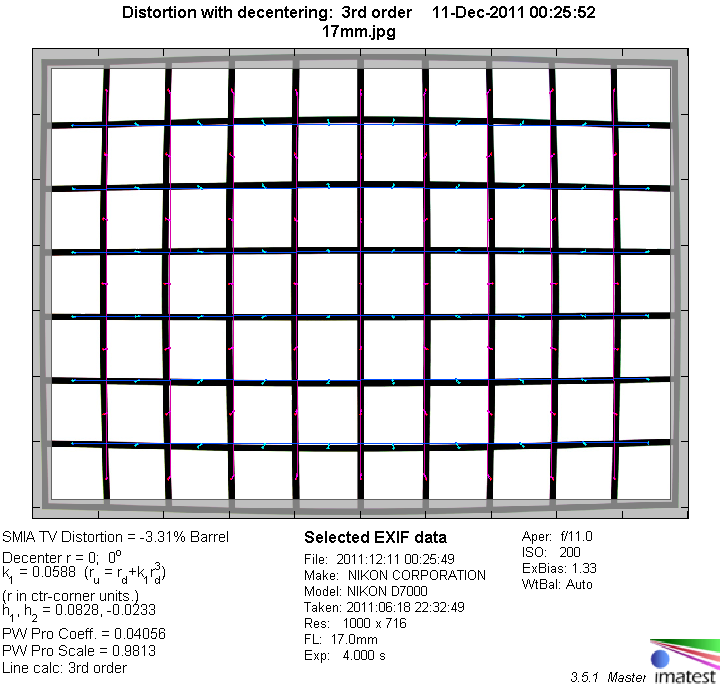|
Sigma AF 17-70mm f/2.8-4 DC HSM OS (Nikon) - Review / Test Report - Analysis |
|
Lens Reviews -
Nikon / Nikkor (APS-C)
|
|
Page 2 of 3

Distortion
The distortion figures of the Sigma 17-70mm OS are fairly typical for a relatively long range standard zoom lens. At 17mm it shows very pronounced barrel distortion (~3.3%) and moderate pincushion distortion at longer focal lengths. The two opposing distortion types even out at around 24mm where images are basically distortion-free.
|
Move the mouse cursor over the focal length text marks below to observe the respective distortion
|
| 17mm |
24mm |
35mm |
50mm |
70mm |
|

|
The chart above has a real-world size of about 120x80cm.
Vignetting
In terms of aperture, the Sigma lens is quite fast for a standard zoom at the low end, so it doesn't come as a big suprise that it shows the most vignetting at these settings, reaching a corner light fall-off up to 1.2 EV here. Stopping down helps to reduce vignetting to less disturbing values. This is also true for the larger focal lengths, where vignetting is slightly less pronounced wide open and hardly field-relevant stopped down.

MTF (resolution)
The center resolution is very good to excellent when stopped down throughout most of the zoom range, but with a tendency towards lower values for longer focal lengths. Consequently, the results are lowest at the 70mm setting, no longer reaching excellent figures when stopped down and with somewhat reduced contrast at the largest aperture setting.
The borders and corners suffer visibly at the largest aperture settings especially towards both ends of the zoom range. At most focal lengths, they reach very good resolution when stopped down, though.
Please note that the MTF results are not directly comparable across the different systems!
Below is a simplified summary of the formal findings. The chart shows line widths per picture height (LW/PH) which can be taken as a measure for sharpness.
If you want to know more about the MTF50 figures you may check out the corresponding Imatest Explanations

Chromatic Aberrations (CAs)
Lateral CAs (color shadows at harsh contrast transitions) are very well controlled including the critical 17mm setting. The CAs reach values up to roughly 1.5 pixels here. This may be noticeable at 100% image magnification on your screen but it's not really relevant anymore for prints.
In addition, please note that CAs can easily be corrected in software or by the camera itself (most modern Nikon DSLRs remove CAs themselves if you shoot JPGs).

|